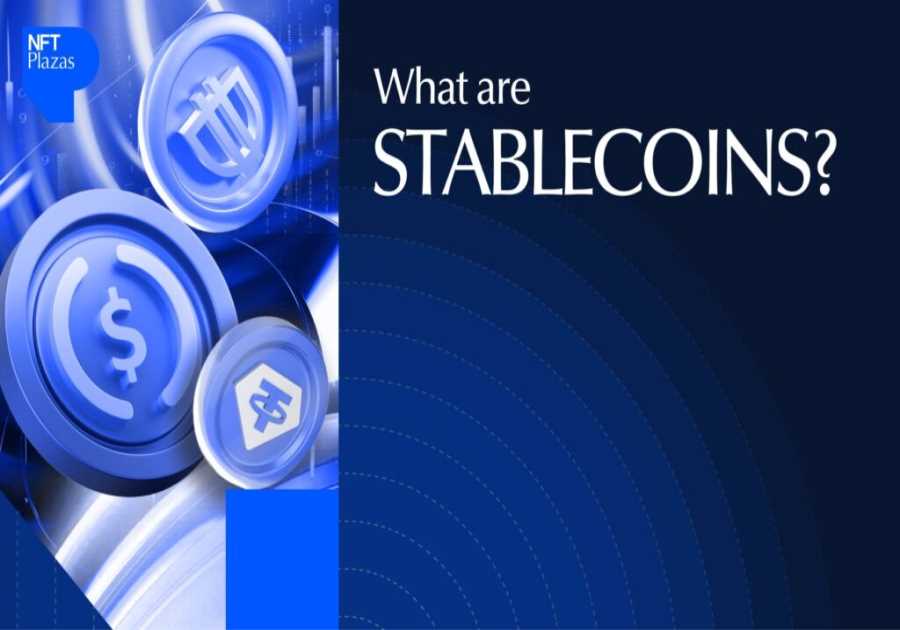Ether mining was a way of generating income for many people, but that changed completely in September 2022 when Ethereum undertook a mammoth upgrade called The Merge. The transition from the energy-intensive Proof-of-Work consensus mechanism to the more sustainable Proof-of-Stake model technically eliminated Ethereum mining, leaving miners and their equipment idle and looking for their next course of action.
Most users now ask the question, “Can you still mine Ethereum?” and if you can’t, does that mean Ethereum mining is at an end? Are there alternatives to ETH mining that former miners can employ their hardware too? This article dives into Ethereum mining, why the network stopped using it, and what alternatives there are.
Can You Still Mine Ethereum?
Cryptocurrency mining gained popularity in late 2021 when Bitcoin became a widely recognized cryptocurrency. However, as new cryptocurrencies entered the market, several others rapidly joined the fray. Ethereum operates on a similar consensus mechanism to Bitcoin, and at some point, ETH mining became more profitable than Bitcoin mining, drawing a large number of miners interested in making quick money. However, if you’re interested in knowing how to mine Ethereum, we sadly inform you that you’re too late.
It is no longer possible to mine Ethereum due to an operational modification that the blockchain made in September 2022. As a result of an upgrade called The Merge, the network transitioned to what is now referred to as Ethereum 2.0, changing how ETH is generated and verified. However, if you’re interested in supporting the network and generating revenue from it, there is a new way to do so. After the merge, miners were replaced by validators, who are now responsible for securing the network through a process called staking.
Why Did Ethereum Switch from Proof of Work (PoW) to Proof of Stake (PoS)?
Ethereum transitioned from Proof of Work (PoW) to Proof of Stake (PoS) to address a significant issue related to the excessive energy consumption required to solve complex mathematical puzzles necessary for transaction validation, resulting in high energy usage and transaction costs. The energy requirement was unsustainable due to the high cost of the process. Instead of relying on energy-consuming mining hardware, the network transitioned to a more user-friendly method that utilizes validators instead of miners. Here’s a more detailed explanation:
- Energy Efficiency: PoW’s energy-intensive nature was unsustainable, so the blockchain adopted a less energy-intensive PoS, eliminating the need for computational energy.
- Scalability: PoW was slow and expensive, usually leading to network congestion and high transaction fees, compared to PoS, which had the potential to reduce costs and increase speeds.
- Environmental Sustainability: Environmentalists were concerned about the high energy consumption of PoW, and PoS addressed that problem directly.
- Economic Incentives: PoS encourages users to hold ETH in the long term, and stakers benefit from receiving rewards for validating transactions.
“The Merge” Explained: Why Mining Is No Longer Supported?
The Ethereum network executed an upgrade called The Merge on September 15, 2022. Before The Merge, issuing ETH coins occurred in two distinct layers: the execution layer and the consensus layer. The execution layer solely depended on Ethereum miners and was backed by the Proof-of-work consensus mechanism.
The consensus layer, also known as the Beacon Chain, went live in 2020, requiring validators to use the proof-of-stake mechanism instead of miners. Ethereum users bootstrapped the chain by using one-way ETH deposits into a smart contract on the Mainnet, which the Beacon Chain accepted and credited a similar amount on the new chain.
The merge combined the execution layer that handles transactions with the new Beacon chain (the consensus layer) that uses proof-of-stake, and all activities associated with the issuance layer were transferred to the Beacon chain, which was henceforth validated through proof-of-work validation. As a result, Ethereum miners who used the PoW mechanism were rendered redundant and could no longer create or add new blocks to the network after the two layers were merged.
Will PoS Kill Crypto Mining Completely?
For those asking, “Will PoS kill mining?” as we know it, the answer is a resounding no. However, the implementation of The Merge completely transformed the mining landscape by introducing a new kind of participation. While PoS may have eliminated miners who relied on energy-intensive hardware to solve complex mathematical puzzles, it introduced staking, which uses the proof-of-stake mechanism to secure the blockchain and validate transactions.
So, is crypto mining dead as a result? No, instead, other blockchains still prefer using the Proof-of-Work mechanism, meaning the demand for crypto miners remains high. While Ethereum’s move from mining to staking may have impacted the mining industry, PoS will not kill the crypto-mining industry. Crypto mining remains a viable income-generating exercise, as some cryptocurrencies, such as Ethereum Classic, Bitcoin, Litecoin, and Ravencoin, still utilize it, even as more people join the world of cryptocurrency.
Ethereum Staking: Earn ETH without Mining
Ethereum staking refers to a method of verifying and validating transactions on the network without using computational power, such as mining. Instead of solving challenging mathematical puzzles, stakers hold a certain amount of cryptocurrency in a dedicated wallet, known as a staking wallet, to help support the network’s operations. Crypto staking is a critical component of the proof-of-stake consensus model blockchains, which also promotes the adoption of blockchain technology.
By asking stakers to hold a portion of their tokens, they are incentivized to perform their task in the best interest of the blockchain, thereby keeping it secure and avoiding the risk of losing their staked cryptocurrency. The network uses a random process to choose stakers to act as validators primarily based on the number of ETH tokens staked and the lockup period they have chosen. The greater the amount of crypto a staker holds in the staking wallet and the longer they have been staking, the higher the probability of their being chosen as validators. Remember that during the staking period, the staked cryptocurrency isn’t available for trading or other transactions. Still, stakers are rewarded in the form of additional ETH tokens, just like it was with ETH mining.
PoW vs. PoS Comparison
Since we’re now clear about the difference between Ether mining through the PoW model and staking via the PoS model, it’s time to compare the two models:
- Security: PoW has been around for a while, and the expense and work involved in validating transactions makes it harder for malicious actors to attack. In contrast, PoS is newer and has less proven security.
- Energy Consumption: The primary drawback of the PoW model is the substantial amount of electricity required to solve the mathematical puzzles, which has raised environmental concerns. PoS processes, such as staking, are more energy efficient than PoW, considering that validators are chosen based on the number of tokens they stake.
- Transaction Speeds: PoW networks tend to be slower due to puzzle solving and long block times. Proof-of-stake (PoS) blockchains are more scalable, meaning they can handle more transactions per second because the process involved in validating transactions is faster and more efficient. PoS networks generally facilitate faster transaction times because, once chosen, validators don’t have to struggle to solve complex mathematical puzzles, thus speeding up the validation process.
- Potential for Miner Centralization: PoW is generally designed to promote decentralization; however, the high costs associated with electricity bills and mining equipment could easily lead to centralization, as large mining farms with more resources may dominate the network. PoS can face similar risks if large stakeholders control significant token amounts.
- Entry Barrier: Becoming a validator in a PoS network is less expensive than joining a PoW network because you only need a certain amount of tokens for staking, meaning it can be more accessible to a broader range of users. Becoming a miner in a PoW network can become a deterrent because you need to buy expensive mining rigs and have a constant supply of electricity.
How to Stake Ethereum: Step-by-Step
Before we can tell you exactly how Ethereum staking works, you need to know that there are at least three ways you can offer a staking service to the Ethereum network.
1. Solo Staking
This means running a validator node on your own by depositing 32 ETH, which is the minimum amount of tokens you need to become a staking node. As a solo staker, you will have complete control and ownership of the staking rewards earned. However, you must have reliable hardware, technical expertise, and a stable internet connection to increase your chances of being selected as a validator.
2. Staking Pools
An alternative option is to join a staking pool, where like-minded investors pool their ETH resources together, making it easier to meet the 32 ETH requirements. Once the ETH rewards have been earned, they will be distributed among participants based on the amount of ETH they contributed to the pool.
3. Stake as a Service
Nowadays, there are third-party providers of staking services that handle the process of running validator nodes for a fee. This can be especially ideal for beginners who are new to the field.
And now to the step-by-step process of staking Ethereum, which involves a few simple steps, as shown below:
- Step 1: Enter Into a Smart Contract: The first step involves depositing the amount of ETH you want to stake into a smart contract. The contract guarantees that your funds are locked up securely and commits you to your role as a validator.
- Step 2: Random Selection of Validators with 32 ETH: Next, the network will randomly select validators from those who have staked a minimum of 32 ETH, ensuring decentralization and fairness in the blockchain’s consensus mechanism. It is the responsibility of ETH validators to validate transactions and propose new blocks.
- Step 3: Add New Blocks to the Ethereum Blockchain: The selected validators validate transactions or propose new blocks and are rewarded with the newly created tokens as a reward for their participation. The rewards are usually paid in ETH tokens. In the case of a mining pool, they are distributed proportionally among pool members based on the amount of ETH they contributed.

Staking vs. Mining: What’s more profitable?
When comparing ETH mining and staking, there are essential factors, such as starting capital, technical expertise, and energy consumption, that you need to consider.
Crypto mining can be more profitable in the short term, especially for miners with high-octane mining hardware and operating in areas with a cheap source of electricity. The only drawback is the need for a substantial up-front investment and ongoing operational costs, which serve as a significant entry barrier for most interested participants.
When it comes to staking, all that you need as an investment is setting apart a specified amount of tokens, such as 32 ETH, for Ethereum staking to begin, which makes it less capital-intensive for interested parties compared to crypto mining. Moreover, staking is considered more eco-friendly because it consumes a smaller amount of energy. Crypto staking could also become a long-term investment strategy, given the possibilities for the value of the staked tokens to appreciate over time-based on the sentiments of the broader cryptocurrency market.
Ultimately, the decision between mining and staking will come down to individual investment goals and prevailing circumstances. Potential users must research both staking and mining, considering key factors such as technical requirements, startup and operational costs, and possible rewards before deciding which option is best for them.
Risks of Ethereum Staking
While staking may have taken the place of Ethereum mini and brings various benefits, we have already stated that there are several trade-offs you want to consider before joining the bandwagon:
1. Technical Expertise: To run and maintain a validator node, a certain level of technical expertise is required. Also, there will be issues you have to contend with, like software vulnerabilities and downtimes that could easily lead to missed rewards:
2. Penalties: Serious validator errors can trigger slashing penalties, potentially causing partial or total loss of staked ETH. These penalties help maintain validator honesty and protect the Ethereum network. They fall into two main types:
- Inactivity Slash: This happens when you’re offline for too long, missing block proposals or transaction verifications. You may lose part of your staked ETH based on downtime.
- Vote Slash: More severe, this penalty applies when a validator votes on two conflicting blocks. It can result in larger losses and disrupt network consensus. The network imposes a harsher penalty for this offense, which could result in losing a larger portion or the entire staked amount.
3. Volatility: The cryptocurrency market is volatile, primarily due to the significant fluctuations in ETH prices in some cases. This means that the value of your staked ETH and the potential rewards you could earn will fluctuate based on market sentiment.
4. Centralization Risk: When a large portion of ETH is staked in a few pools, it raises centralization concerns. If not properly monitored, this could affect the blockchain’s governance and security—especially if a malicious group gains control over a significant share.
5. Regulatory Risk: The legal and regulatory environment surrounding the crypto space is still evolving. No one can tell when new regulations could negatively impact the viability of Ethereum staking.
Other Methods to Earn ETH
Starting in July 2015 as an ambitious project aimed at addressing Bitcoin’s shortcomings, Ethereum has come a long way and is now the second-largest cryptocurrency by market capitalization. For some individuals, it has become a source of income. For anyone holding some amount of ETH and wondering how else you can employ your tokens to earn some interest, we propose at least three different ways users can earn passive income from their ETH holdings:
Providing Liquidity to ETH Trading Pairs
Supporting DeFi mining pools can be an interesting way for free Ethereum mining as you contribute especially to DeFi platforms to facilitate their trading activities. Participants provide ETH tokens in trading pairs by depositing ETH and any other cryptocurrency such as USDT, USDC, or BTC) into a decentralized exchange’s liquidity pool. This enables traders on the DEX to exchange ETH for different assets and vice versa, thereby making the market more liquid. In exchange, liquidity providers earn a percentage of the transaction fees the platform earns from traders who use it.
Yield Farming
Think of a yield farmer as a digital farmer who plants crypto tokens instead of growing the traditional crops grown on farms. The seed you provide is your ETH tokens to decentralized finance (DeFi) platforms to boost their liquidity. Once you have deposited your ETH tokens, the platform will use your seed capital to facilitate crypto loans that borrowers pay back with interest. The yield farmer is paid a portion of the interest earned from lending, transaction fees, and, at times, various bonuses here and there. The best thing about yield farming is the potential for achieving significant returns, especially at a time when DeFi projects are disrupting the traditional method of borrowing from banks.
Ethereum Mining Alternatives
The Ethereum mining landscape has undergone significant changes. In 2025, the concept of mining Ethereum using traditional GPUs or ASIC miners is no longer applicable, as the network transitioned to the Proof-of-Stake consensus model in 2022. In the current era, Ether mining has been replaced by staking, a more eco-friendly process that offers participants the opportunity to earn crypto rewards and passive income. However, if you’re still interested in mining, the following are available alternatives to employ your mining gear.
1. Bitcoin (BTC)
Bitcoin (BTC), the flagship cryptocurrency, remains the most widely mined cryptocurrency that utilizes the Proof-of-Work (PoW) mechanism to facilitate trustless transactions without an intermediary, such as traditional banks. With its fixed supply of 21 million coins, it is believed that close to 19 million coins have been mined so far. To this day, Bitcoin mining remains more challenging than it was in the past, meaning you can no longer use a regular GPU to mine BTC. Instead, the Bitcoin mining field is dominated by powerful ASIC miners, making BTC mining a unique business, with big corporations running some of the largest mining firms imaginable.
2. Ethereum Classic (ETC)
Ethereum Classic (ETC) is a rival blockchain that forked from the Ethereum Mainnet in 2016 following a split over disagreements on handling a serious DAO hack. It follows the original Ethereum principle of immutability, ensuring that transaction history remains unaltered under any circumstances. Ethereum Classic still operates on the proof-of-work consensus mechanism, similar to Bitcoin, and miners are responsible for validating transactions and securing the network. Miners receive rewards in the form of newly created ETC tokens for their contribution to the welfare of the network.
3. Litecoin (LTC)
Litecoin was created in 2011 as a lighter version of Bitcoin. As a result, it shares many similarities with the original cryptocurrency but differs in terms of faster transaction speeds and lower transaction fees. Instead of using Bitcoin’s SHA-256 algorithm, Litecoin uses Scrypt, which made mining faster than BTC and more accessible to participants using CPUs and GPUs, especially in the earlier days. However, as competition and network difficulty increased, it is now commonplace for Litecoin miners to use ASIC computers. The cryptocurrency has a total supply of 84 million tokens, which is four times larger than Bitcoin’s. LTC’s current block reward is 6.25 LTC per block, and the next Litecoin halving event is expected in 2027.
4. Dogecoin (DOGE)
Dogecoin (DOGE) was initially designed as a lighthearted alternative to Bitcoin, but the token quickly gained popularity due to its low transaction fees and friendly community. The token is popular for tipping creators, micro-transactions, and different forms of charitable donations. Like Bitcoin, Dogecoin operates on a proof-of-work mechanism but with a significantly faster block time of 1 minute. Dogecoin operates on an inflationary supply model, meaning it doesn’t have a maximum cap. This ensures that miners will continue to receive mining rewards as long as the token exists.
5. Ravencoin (RVN)
The creators of Ravencoin designed it to be ASIC-resistant. This means it can only be mined using standard GPU computer hardware. The very design of the Ravencoin blockchain makes it convenient for all levels of investors to create tokens and conduct transactions, making it an ideal choice for people interested in home mining since you can also use a standard CPU to mine the token. If you’re interested in joining crypto mining on a budget and making a profit, then look no further than Ravencoin.
6. Monero (XMR)
Monero (XMR) is a cryptocurrency designed to facilitate secure and anonymous transactions by hiding sender and receiver details, as well as transaction amounts, using RingCT, an advanced cryptographic technique, and stealth addresses. The blockchain doesn’t make the transactions public, unlike Bitcoin, meaning all transactions remain confidential. Monero also uses the proof-of-work model and doesn’t have a cap on the numbers that can be mined. More and more miners are joining the Monero mining bandwagon for its long-term appeal.
Conclusion
Ethereum mining in 2025 may not be possible in the same way we know it. Still, anyone interested in participating in the network’s activities can opt for staking, which is what has been used following the 2022 Merge upgrade. If you still want to get involved in mining, there are other alternatives you can consider so that your mining rigs don’t remain idle.
If you’re asking, “Is mining Ethereum profitable?” In 2025, you want to know that staking, which is the alternative to mining, has less hardware and electricity costs and can turn out to be equally profitable. When considering alternative cryptocurrency mining, be sure to work out what it would cost you and choose one that is profitable to mine.
FAQs
Is crypto mining still dead?
Crypto mining isn’t dead. While Ethereum could have transitioned from the PoW model to the PoS consensus mechanism that involves staking, crypto mining is still a viable activity, as many other blockchains, such as Bitcoin, Monero, Litecoin, Ethereum Classic, and others, use proof-of-work.
Is ETH mining still profitable in 2025?
Following the 2022 Merger upgrade, you can no longer mine Ethereum since the network transitioned to the proof-of-stake model, meaning the blockchain now supports staking instead of mining.
Can I mine Ethereum for free?
No, you can’t mine Ethereum for free in 2025 or at any point following the 2022 Merger upgrade. Instead of mining, participants now stake Ethereum to earn passive income.
How long will it take to mine 1 ETH?
ETH mining is no longer possible after the transition to the proof-of-stake consensus method in 2022. Instead, participants now use staking to earn rewards. For staking, the amount of time it would take you to earn 1 ETH token will be determined by factors like how much ETH is staked the staking pool’s payment structure, and the overall network activity.
The post Can You Still Mine Ethereum? How to Earn ETH in 2025 appeared first on NFT Evening.
Read MoreBy: Michael Le
Title: Can You Still Mine Ethereum? How to Earn ETH in 2025
Sourced From: nftevening.com/how-to-mine-ethereum/?utm_source=rss&utm_medium=rss&utm_campaign=how-to-mine-ethereum
Published Date: Sun, 31 Aug 2025 02:32:07 +0000
----------------------------
.png)





